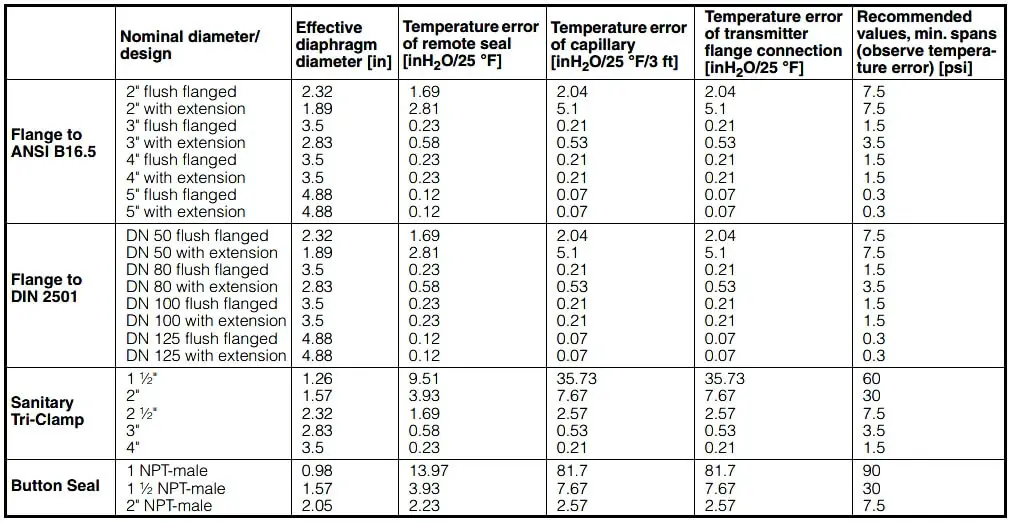The following equation is used to calculate the temperature error for remote seals:
Where
dp = (212 °F – 68 °F) . 0.077 inH2O/25 °F + (122 °F – 68 °F) . 15 ft . 2 . 0.042 inH2O/25 °F / 3ft + (122 °F – 68 °F) . 0.042 inH2O/25 °F
dp = 0.444 inH2O + 0.907 inH2O + 0.091 inH2O
dp = 1.442 inH2O (corresponds to 3.605 % of set span)
Note:
The temperature error determined above only applies to the error resulting from connection of the remote seal.
The transmission response of the respective transmitter is not included in this consideration. It must be calculated separately, and the resulting error added to the error determined above from connection of the remote seal.
Temperature errors of diaphragm seals when connected to pressure, absolute pressure or level transmitters, and with single-sided connection to differential pressure transmitters

Remarks:
The errors listed in the tables on pages 2/140 and 2/141 refer to the use of stainless steel as the diaphragm material. If a different material is used, the listed values change by the amount shown in the following table.
Source : Siemens
Open Telemetry is a framework for collecting data in cloud-native applications including tracing, metrics, and…
This article is about controlling the Pneumatic cylinder and Pneumatic motor in the assembly line…
In this post, we will learn the basic requirements for a network switch to be…
The PLC panel and MCC panel interface signals are start, stop, run feedback, trip, local…
In this article, we are going to discuss about shutter door control using induction motor…
Electrical Drives control the motion of electric motors. Motion control is required in industrial and…
View Comments
kindly explain the diaphragm material used in which kind of fluid. ie hydrogen, chlorine, acid, brine, steam/water etc.